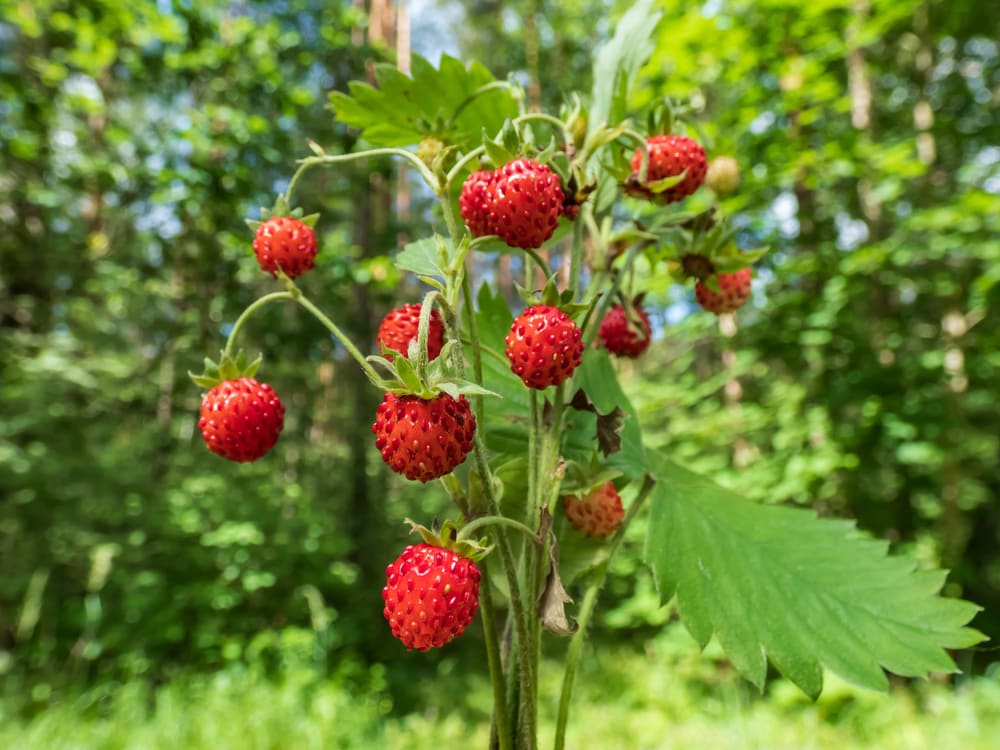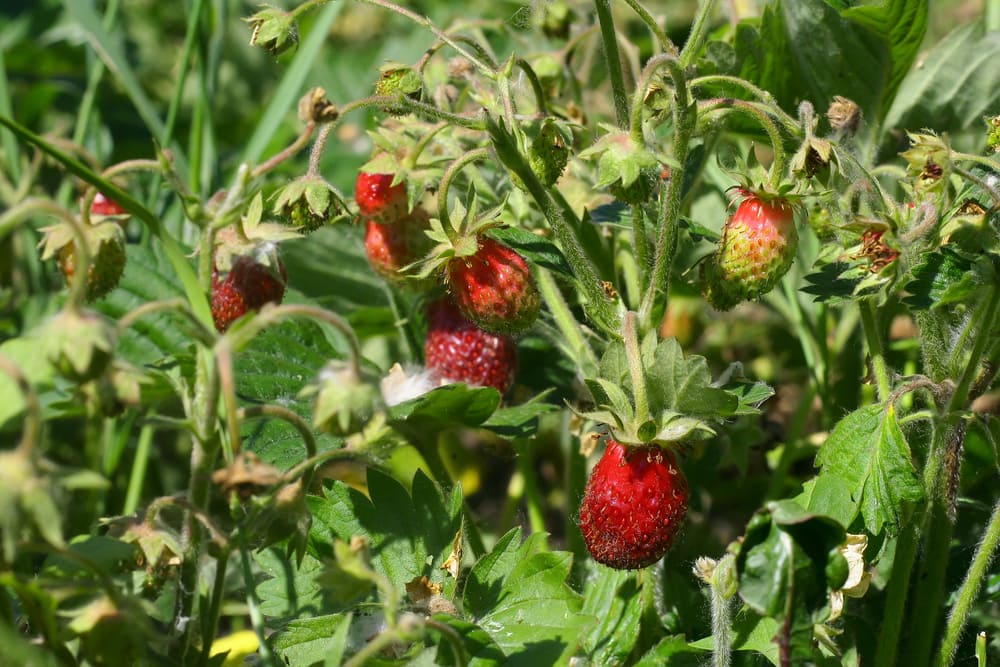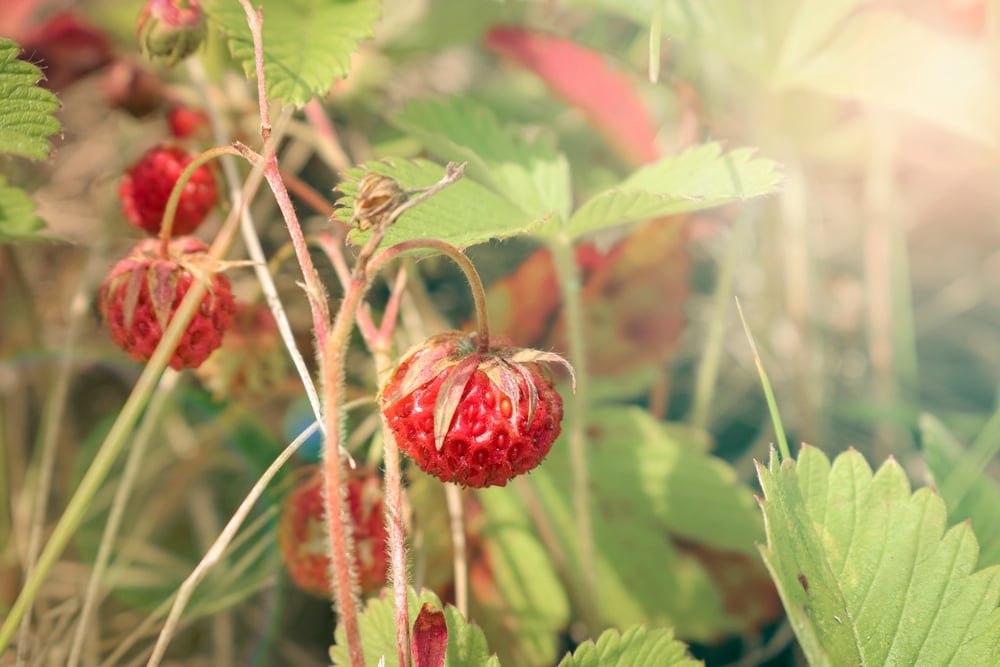Outforia Quicktake: Key Takeaways
- Strawberries are not technically berries; they are considered aggregate accessory fruits.
- The fleshy part of a strawberry comes from the receptacle that holds the ovaries, and it has many tiny individual fruits embedded on it.
- True berries, like blueberries and grapes, are fleshy fruits with seeds and pulp that develop from flowers with only one ovary.
- Strawberries have been cultivated and bred for centuries, with the first self-pollinating garden strawberry plants grown in Brittany, France, in the 18th century.
- Despite not being berries, strawberries remain a popular and versatile fruit enjoyed worldwide.
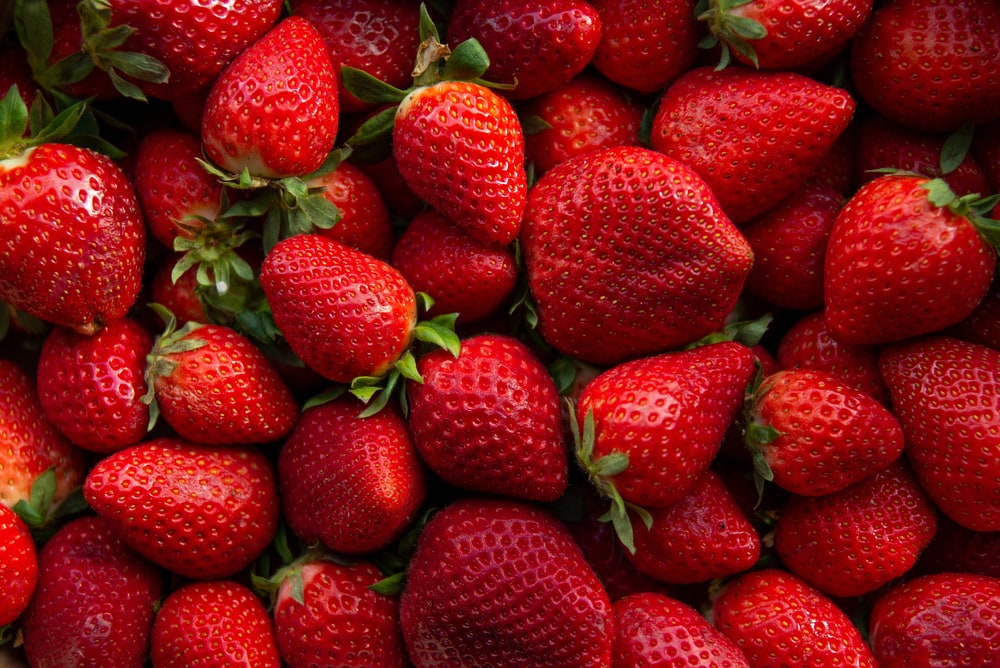
Humans have loved strawberries since the dawn of time. Early hunter-gatherers would scavenge for berries as a valuable food source well before the start of agriculture. As we evolved, we learned how to store them for winter and make them into fruit preserves.
Nowadays, berries are so popular that people cook them into jams, cakes, and delicious pies.
Some species, like the strawberry, have been bred for years to look and taste like the version we have now. Today, twice as many strawberries are produced globally as any other type of berry. But how much do we know about strawberries?
Are strawberries berries? Let’s find out the exciting history of the strawberry and its journey to becoming the fruit we know and love today.
What Are Strawberries?
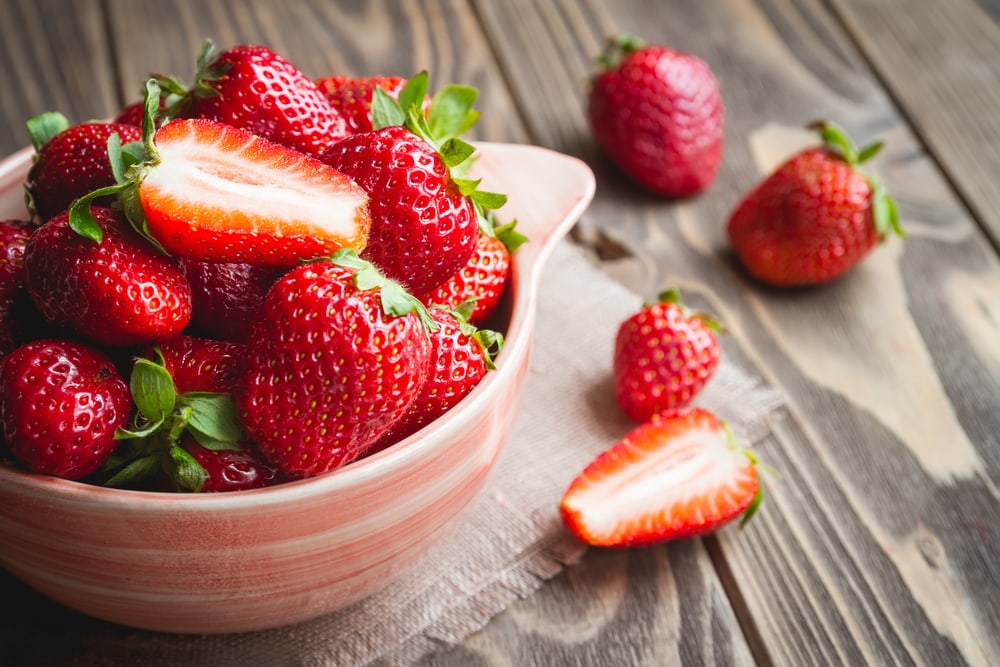
The strawberry is a hybrid species of the genus Fragaria. It is a widely popular species cultivated worldwide for the fruit’s sweetness and enticing aroma. Even more appealing is its versatility as a cooking and baking ingredient.
The first mention of the strawberry fruit is found in ancient Roman literature, which mentions its medicinal properties.
In the 14th century, the French enjoyed wild strawberries so much that they started picking them from forests. They eventually added them to their gardens for cultivating, hence garden strawberries.
By 1364, France’s king Charles V had over 1,200 strawberry plants in his garden. The fruit’s popularity only continued to grow from there. By the 16th century, it was common to cultivate strawberries for their medicinal properties.
At the end of the 16th century, there were already three European strawberry species: Fragaria vesca, Fragaria moschata, and Fragaria viridis. The wild strawberry was transplanted in gardens and then propagated asexually.
Today’s strawberries originated from the introduction of the F. virginiana strand from eastern North America to Europe in the 17th century. Meanwhile, a French trip to Chile in 1712 led to the discovery of a strawberry plant with female flowers.
When F. chiloensis, the Chilean strawberry, was introduced to Europe, it produced no fruits. Then, French gardeners noticed that when F. virginiana and F. moschata were planted between F. chiloensis, the Chilean strawberry plants would make large fruit.
When Antoine Nicolas Duchesne started studying how strawberries breed, he realized that only certain species like F. virginiana with a matching number of chromosomes could pollinate F. chiloensis.
At the end of the 18th century, the first-ever self-pollinating garden strawberry plants were grown in Brittany, France. After that, people bred many more strawberry varieties to improve their quality.
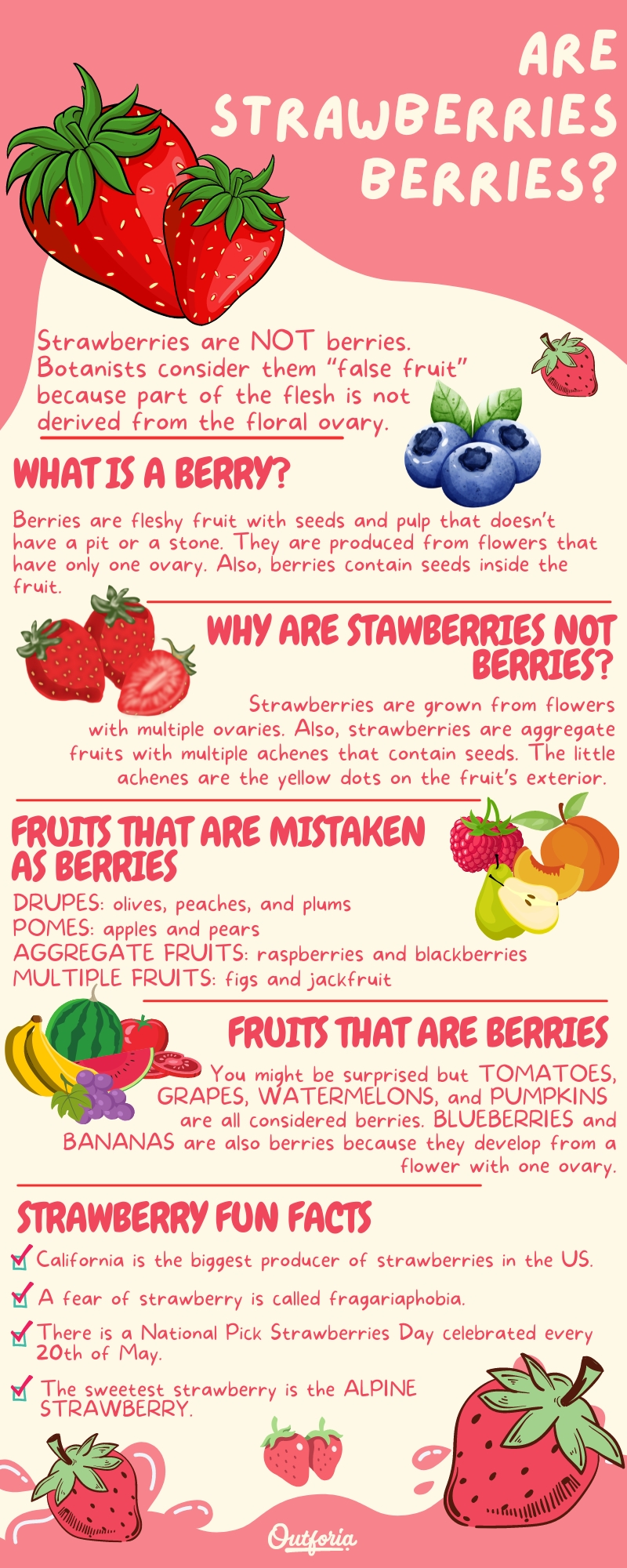
Share this image on your site
<a href="https://outforia.com/are-strawberries-berries/"><img style="width:100%;" src="https://outforia.com/wp-content/uploads/2022/11/are-strawberries-berries-infographic.jpg"></a><br>are strawberries berries <a href="https://outforia.com">Outforia</a>Are Strawberries Berries?

The strawberry is not a berry. Botanists consider the strawberry a “false fruit” or an aggregate accessory fruit.
Rather than the plant’s ovaries, the fleshy part comes from the receptacle that holds the ovaries. The strawberry is a multi-fruit with many tiny individual fruits embedded on a fleshy shell.
When we think of vegetables, we immediately think of healthy green plants cultivated for their edible parts. Likewise, when we think of fruits, we think of sweet-tasting plants. However, fruits are a bit more complicated than that.
The ovary of a seed-bearing plant is called the pulp. The pulp, or the pericarp, contains three layers. The skin is the exocarp and the mesocarp is the “flesh” or middle part. Finally, the endocarp is the layer closest to the seeds.
When it comes to berries, their classification is even more complex.
You may also like: Toxic Plants That Look Like Food: 30 Plants You Need To Know
What Is a Berry?
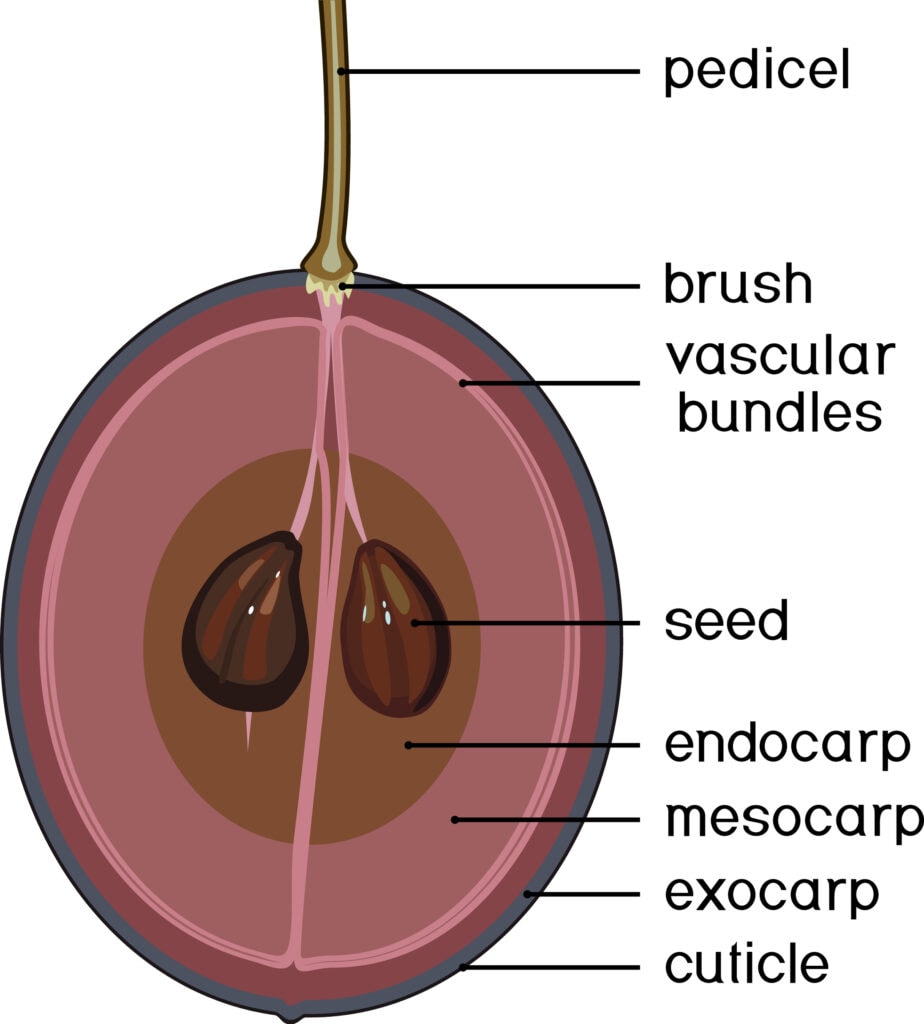
Botanists consider berries fleshy fruit with seeds and pulp that don’t have a pit or a stone.
Moreover, berries are produced from flowers that have only one ovary. Basically, berries contain seeds inside the fruit. Common berry examples include blueberries and blackberries. Uncommon examples of berries are grapes and tomatoes.
If you think it’s weird for a tomato to be considered a berry, wait until you find out that watermelons and pumpkins are also classified as giant berries!
The everyday use of the word berry is quite different than what the botanists’ definition entails, so we have three categories of berries:
- Botanical berries that aren’t known as berries
- Plants commonly known as berries but aren’t botanical berries
- Berries that are both botanical berries and commonly known as berries
Under both definitions, we have blueberries and cranberries. Blackcurrants and white currants are botanical berries, even though their names don’t have the “berry” extension.
Other species of botanical berries include bananas, tomatoes, and eggplants.
Several fruits are commonly referred to as berries but are not botanically classified as such. Instead, they are considered berry-like fruits and have their own category.

Drupes
Drupes are fleshy fruits usually produced from a single-ovary flower with a hard endocarp layer around the seed. Typical examples of drupes include peaches, plums, and olives.

Pomes
Pomes have more rigid tissue separating the seeds from the softer pericarp. Examples of popular pomes include apples and pears.

Aggregate fruits
Aggregate fruits are not considered berries because they contain seeds from different ovaries of a flower. For example, raspberries and blackberries are aggregate fruits.

Multiple fruits
Two or more flowers that are combined form multiple fruits. These are not berries, and the list includes figs and jackfruit.

Accessory fruits
One of the reasons why accessory fruits are not berries is that the edible part doesn’t come from the ovary. The most known accessory fruit is the strawberry.
What Is a “False Fruit”?
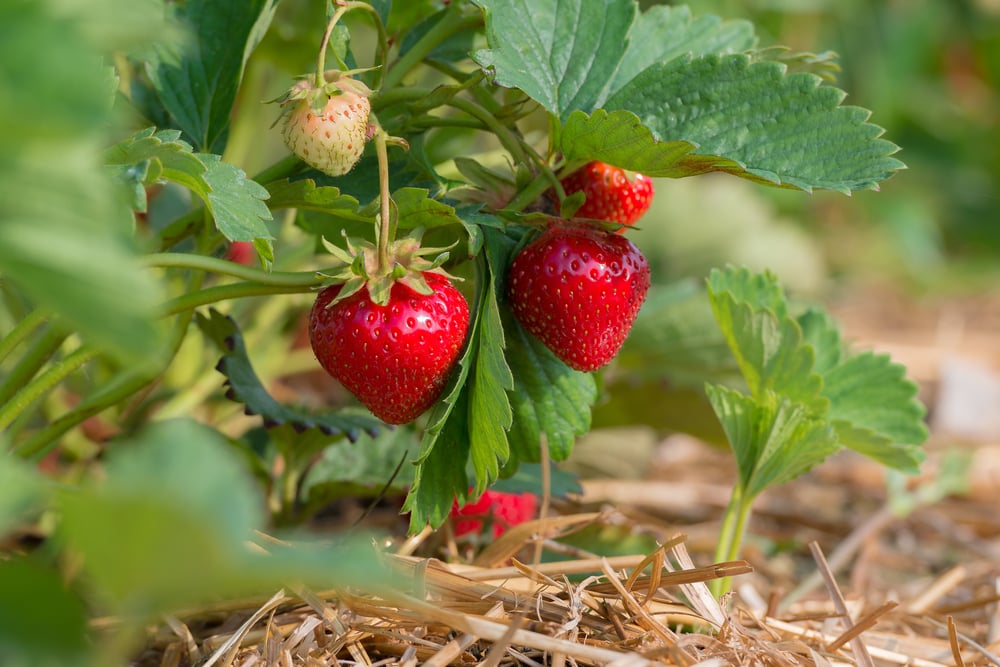
False fruit is an outdated term for accessory fruit. In an accessory fruit, the flesh comes from tissue adjacent to the carpel rather than the floral ovary. So in simpler terms, a true fruit comes from the ovary of a fertilized flower. A false fruit comes from other floral parts and tissues.
For example, the mulberry is a false fruit. It’s known for rearing silkworms and bearing distinct red, white and black fruits. Botanists call it a multiple fruit, meaning it’s a single fruit with multiple fused inflorescences.
An inflorescence is a group of flowers arranged onto a stem made up of one or more main branches.
Another excellent example of a false fruit is the pineapple because of how it’s produced. When two unpollinated flowers get fused, they become multiple fruit. So the pineapple consists of several combined inflorescences.
You may also like: 21+ Types Of Plants: From The Dinosaur Age To The Present (ID Guide, Pictures, And Facts)
Why Are Bananas Berries but Strawberries Aren’t?
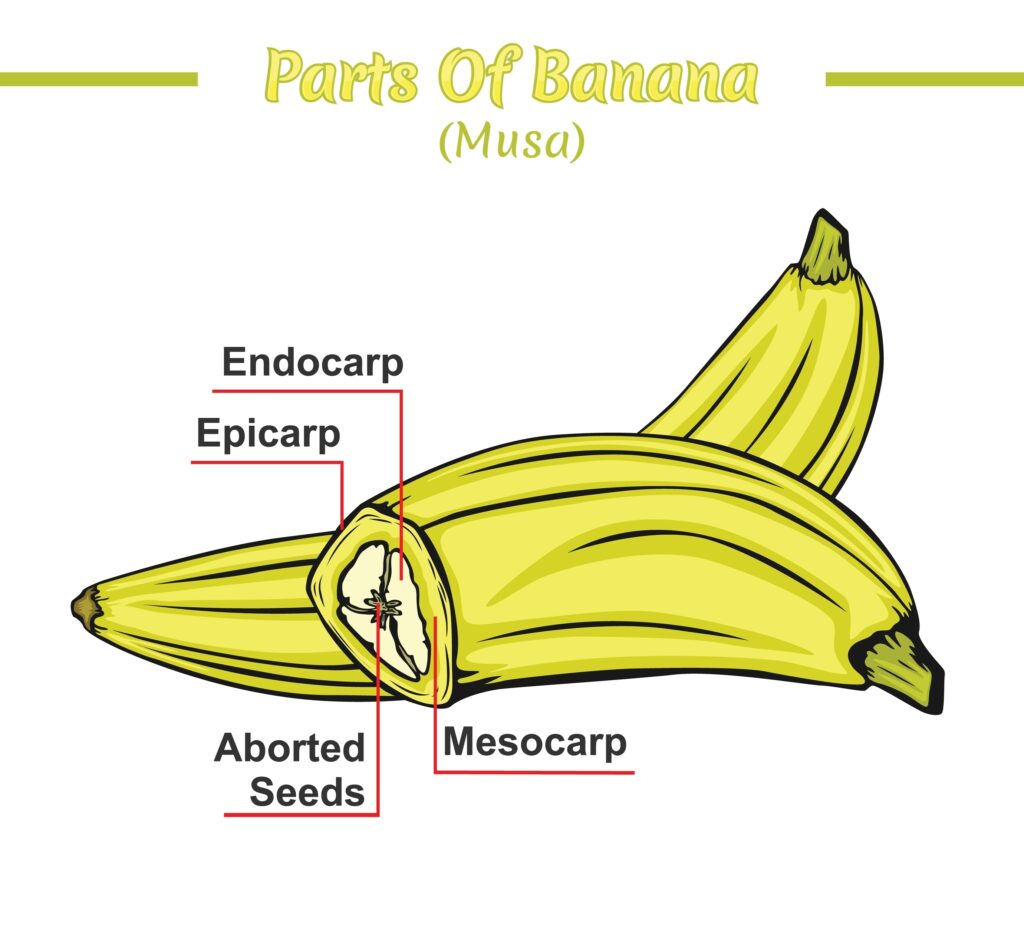
It might seem crazy that strawberries aren’t berries and bananas are. However, there is a logical explanation. What happened is that people began calling certain fruits berries based on their similar appearance before modern-day scientists defined what berries are.
That is, to be classified as a berry, a fruit must develop from a flower with only one ovary.
Blueberries are true berries because they have flowers with a single ovary. On the other hand, strawberries are grown from flowers with multiple ovaries.
The strawberry is an aggregate fruit with multiple achenes that contain seeds. The little achenes are the yellow dots on the fruit’s exterior.
Bananas develop from a flower with one ovary. They also contain multiple seeds that aren’t quite visible.
You may also like: 21 Edible Plants On The Appalachian Trail: Guide To Foraging On The AT
Strawberry Fun Facts
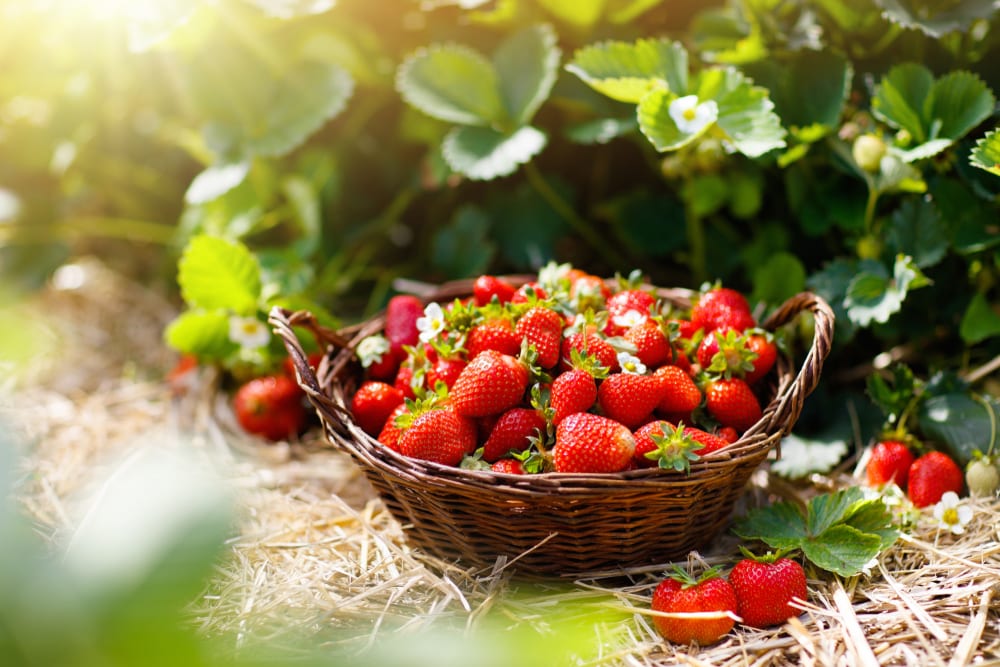

Some people fear strawberries, a condition known as fragariaphobia. The word is derived from the fruits’ genus Fragaria and the word “phobia,” which means fear.

On the 20th of May, we celebrate the National Pick Strawberries Day. This national day encourages people to join their local strawberry farm and pick strawberries as a fun family activity.

If you visit Belgium, you can check out the Strawberry Museum. It’s located in Wépion, and it explains the history of strawberries, how they are grown locally, and their importance to the economy.

California is the biggest producer of strawberries in the US. Its commercial crops produce more than 80% of the strawberries across the whole country.
You may also like: 43 Different Types Of Mushrooms: From Edible To Poisonous
Strawberries FAQs
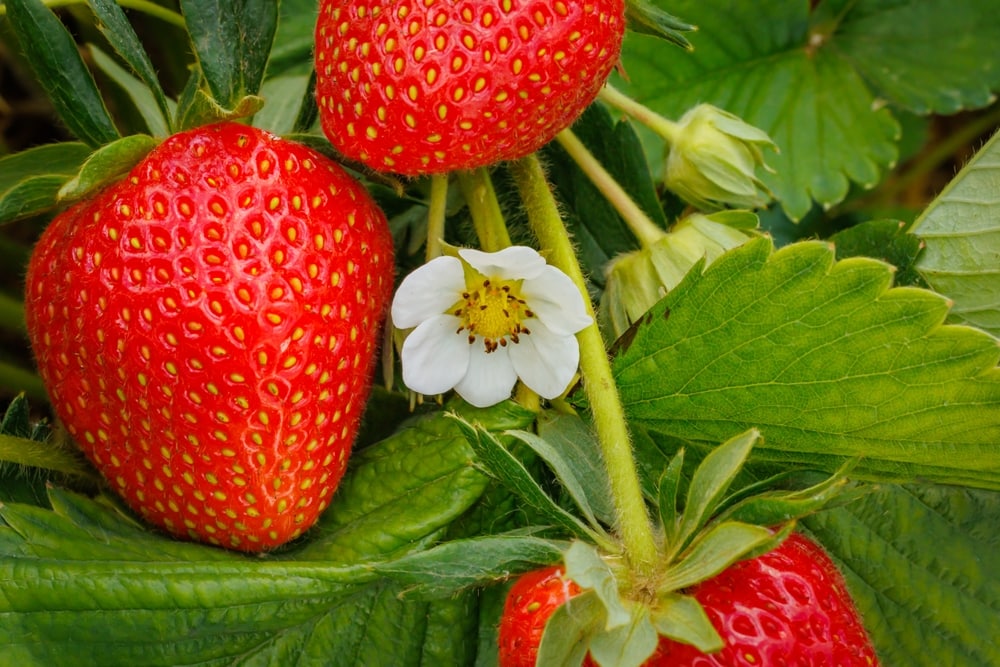
What’s the difference between fruits and vegetables?
Fruits contain seeds and are formed when a flower blooms. In comparison, vegetables have different edible parts, such as leaves, stems, and bulbs.
Which is the sweetest strawberry?
The sweetest strawberry is the Alpine strawberry (Fragaria vesca). It is easy to grow and produces a small and extremely sweet fruit.
Are strawberry plants toxic to dogs?
Strawberries are not toxic to dogs, but if they eat them, they might get an upset stomach. If you want to feed your dog strawberries, remove the stems and leaves, so the dog doesn’t choke.
What month do strawberries come into season?
For most of the USA, mid-May through July is the peak time for harvesting strawberries.



